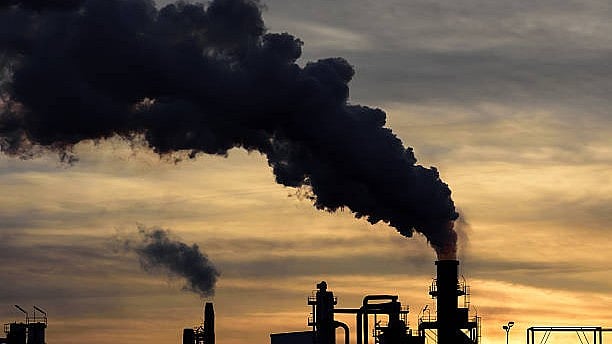
Image for representational purposes.
Credit: iStock Photo
India has set an ambitious goal of achieving net-zero carbon emissions by 2070. But as the country rapidly grows, there is added pressure on energy demand from industrialisation, urbanisation and population growth. The question is: how will the country sustain its growth while fulfilling its climate goals?
India’s goal of a low-carbon future comes with the challenge of mobilising huge levels of investment. The cost of achieving its Nationally Determined Contributions (NDCs) by 2030 is estimated at around INR 10 trillion annually. The current flows are less than 25% of the total funds required to meet
the NDCs. Developed countries offering only $300 billion annually instead of the required $1.3 trillion by developing countries at the 2024 United Nations Climate Change Conference (COP29) highlights the need to fund this gap domestically. The question arises: can India’s financial system rise to meet the urgency and scale of its green ambitions?
Green bonds are debt instruments earmarked to raise funds for projects with environmental benefits. The market for green finance saw a new wave with the first sovereign green bond in 2023. The first tranche was oversubscribed nearly four times, creating hope for a new way to finance climate goals. But this optimism faded with the second tranche in May 2024. With demands for a higher yield from investors, the RBI was forced to cancel its auction for the second tranche. Unlike other bonds, in green bonds, investors are willing to accept a lower yield that can give a financial advantage to the issuer — a greenium. The problem being faced in India is the unwillingness of investors to buy lower-return green bonds versus other higher-return bonds, making it an unattractive choice.
One of the recent shifts is seen in the rising interest of cities in issuing municipal green bonds or ‘muni green bonds’. Municipal bodies have become more active in taking up the sustainability agenda. With constrained balance sheets of the state governments, urban bodies are trying to tap the municipal bond market for climate action.
Ghaziabad pioneered the issuance of a municipal green bond (worth Rs 150 crore) under the Swachh Bharat Mission to build a modern tertiary sewage treatment plant in 2021. The next issuance was seen after two years by Indore, worth Rs 244 crore, for a solar plant.
Many other municipalities showed interest in green bonds since then. In February and March 2024, two Gujarat cities issued green municipal bonds. Ahmedabad made an issuance worth Rs 200 crore for sewage water treatment projects. Vadodara issued Rs 100 crore to set up sewage treatment plants and pumping stations.
This year in April, Ghaziabad issued the first government-certified muni green bond worth Rs 150 crore for developing a Tertiary Sewage Treatment Plant (TSTP). Most recently, Pune’s Pimpri-Chinchwad Municipal Corporation listed Rs 200 crore green municipal bonds in June 2025 for sustainable mobility urban projects.
Muni green bonds will empower the local bodies to raise funds for green activities. The decentralisation of green finance will help in tapping the small yet significant municipal finance market and help in raising funds for climate transition projects in urban governance.
Last month, a framework was issued for ESG-linked transition bonds at GIFT City. This will enable companies that are unable to reduce their carbon emissions to raise funds based on credible carbon reduction plans. In continuation of the announcement in the Union Budget 2024-25, the Ministry of Finance released a draft framework of the Climate Finance Taxonomy in May 2025. The taxonomy is a major step in developing the green finance environment of the country by guiding investors and facilitating resource flow to climate-friendly activities and technologies. Further, the Sebi has tightened ESG fund regulations and made reporting mandatory for green bonds.
The RBI, in a move to widen credit access, has included green activities in Priority Sector Lending.
India’s green finance also suffers from an imbalance in the flows. Most of the flows are targeted towards mitigation (renewables, improving energy efficiency), while adaptation (climate-resilient crops) remains underfunded. Green finance usually benefits big clean energy projects, while MSMEs find it difficult to get affordable finance. MSMEs, being critical for decarbonising supply chains, find themselves excluded from green credit.
India’s determination to achieve its climate goals is clear. Still, the journey is long, and much needs to be done. The real task that lies ahead is to build a financial ecosystem that is deeper and more inclusive. If India can rise to this challenge, it will not only fund its own transition, but also lead the way for emerging economies across the globe.
(The writer is visiting faculty at NMIMS and PhD scholar at Christ University)